Best Security Seals for Logistics and Loss Prevention
August 13, 2025
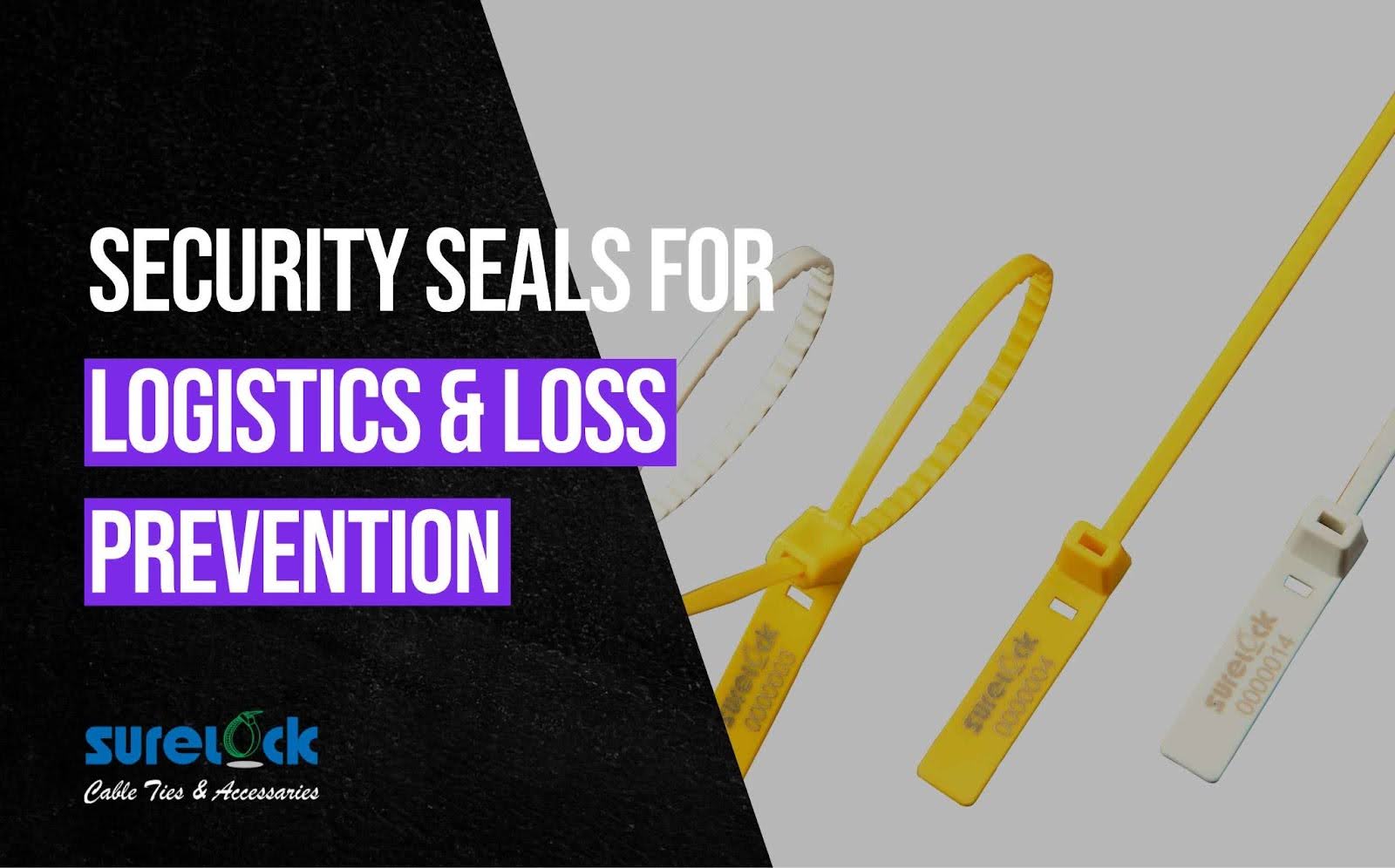
How do you guarantee the security of your shipments when tampering and theft lurk at every checkpoint?
Every package in transit is vulnerable. From the moment goods leave the warehouse to their arrival at the final destination, the risk of tampering or theft is ever-present. The impact of compromised shipments can lead to costly delays, damaged goods, and a loss of customer trust.
Security seals play a crucial role in preventing these threats. They offer a simple yet powerful solution, ensuring your products remain secure throughout the supply chain. By using tamper-evident seals, you protect your shipments and maintain your brand's integrity.
In this blog, we’ll discuss the best security seals for logistics and loss prevention. We’ll explain their importance, the types available, and how to choose the right one for your needs, helping you keep your goods safe at every stage of transport.
What Are Security Seals and Why Are They Important for Logistics?
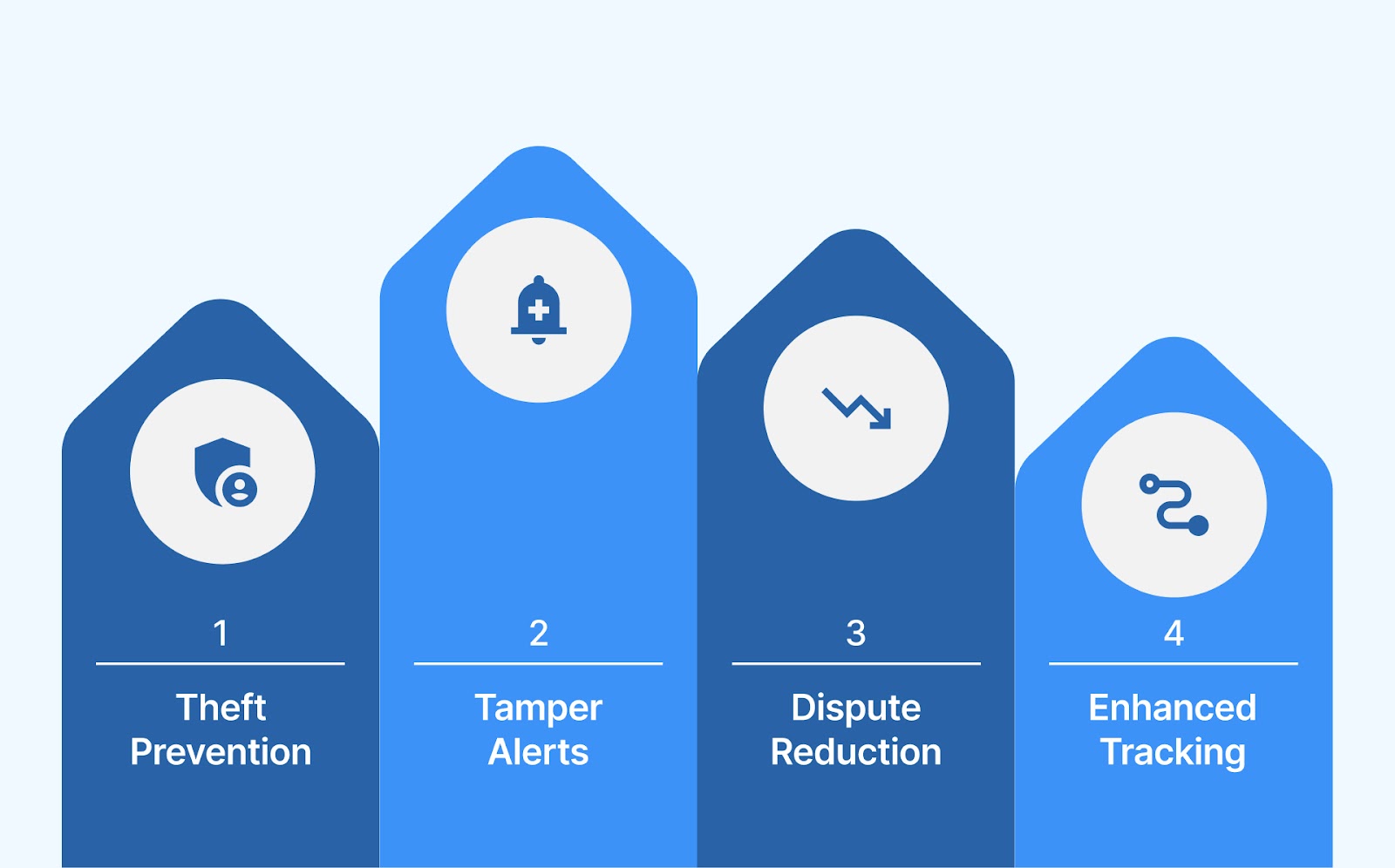
Security seals are vital tools designed to secure and protect goods in transit. They ensure that any attempts to tamper with or access cargo are immediately visible. These seals protect against theft, tampering, and unauthorized access, offering crucial benefits in maintaining the integrity of your shipments.
Here’s why security seals are indispensable in logistics:
- Prevent Theft and Unauthorized Access: Security seals act as a deterrent, safeguarding goods from theft or unauthorized entry. Whether it’s a container, truck, or packaged goods, they provide an added layer of security.
- Real-Time Tampering Detection: These seals provide immediate visual proof that tampering or unauthorized access occurs during transportation. It helps detect breaches quickly and mitigate potential losses or damage.
- Minimize Disputes with Clients and Insurers: With these seals, both logistics providers and clients have clear evidence of whether the cargo was tampered with, preventing unnecessary disputes with clients or claims to insurers.
- Improve Traceability and Control: Security seals enhance the traceability of goods, allowing you to maintain full control over the shipment. They provide tracking points throughout the journey, ensuring that goods are always accounted for.
Security seals offer a comprehensive solution to some of the biggest logistical challenges, ensuring cargo security, reliability, and accountability every step of the way.
Now that we understand the critical role of security seals, let’s dive into the key features and benefits they provide for your operations.
Key Features and Benefits of Security Seals in Logistics

A good-quality security seal can make all the difference in protecting your goods during transit. They safeguard your cargo and provide key benefits that streamline operations and reduce risks. Here are the features the high-quality security seal has and the advantages it brings:
- Tamper-Evident Technology: A top-quality seal should clearly indicate any tampering attempts, whether through visible breaks or unique tamper-evident features. This provides immediate awareness of potential security breaches, allowing swift action to prevent further damage or theft.
- Durability and Strength: Security seals made from strong, weather-resistant materials ensure they hold up in various environments, including extreme temperatures or rough handling. This reduces the risk of seal failure and unauthorized access.
- Easy Application and Removal: A good security seal is user-friendly, allowing for easy application and removal without special tools or expertise. It saves time during loading and unloading processes, ensuring operational efficiency without compromising security.
- Traceability Features: Many modern security seals have unique serial numbers for precise tracking. These features enable real-time monitoring of shipments and offer detailed visibility, which is crucial for accurate inventory management and compliance.
- Regulatory Compliance: Top-quality security seals are designed to meet international standards such as ISO 17712:2013 (International Organization for Standardization 17712:2013) and C-TPAT (Customs-Trade Partnership Against Terrorism) to ensure your shipments comply with global regulations, reducing the risk of fines and delays during customs checks.
Considering the features and benefits of security seals, let's explore the most common types of seals used in logistics to protect shipments.
Common Types and Best Security Seals in Logistics
The logistics industry relies on various types of security seals to protect shipments, with each type suited for specific applications based on strength, material, and environment. Here's a breakdown of the most common security seals used in logistics:
1. Security Seal Light Duty
This seal features a self-locking design with a single-point locking system for tamper-evident application. It is adjustable to fit a range of diameters and is recyclable, making it ideal for light-duty applications where secure but efficient sealing is needed.
- Material: Nylon or Polypropylene (PP)
- Operating Temp: −40°C to +85°C
2. Security Seal Heavy Duty
Designed for more robust applications, the heavy-duty version offers a self-locking design with a single-point locking mechanism, ensuring tamper evidence. It’s adjustable and recyclable for various diameters, making it ideal for securing heavy-duty goods and cargo.
- Material: Nylon or Polypropylene (PP)
- Operating Temp: −40°C to +85°C
3. Double Lock Seal Light Duty
This seal features a self-locking design with a single-point locking mechanism. It ensures tamper-evident security by inserting a serrated strap into the locking head. The length can be adjusted to fit the required diameter, and the identification tag offers space for laser marking logos and numbering.
- Material: Nylon or Polypropylene (PP)
- Operating Temp: −40°C to +85°C
4. Double Lock Seal Heavy Duty
This heavy-duty seal uses a self-locking, single-point locking design to ensure tamper-evident security. The serrated strap is inserted into the locking head and can be adjusted to the required diameter. The identification tag allows for laser marking logos and numbering.
- Material: Nylon or Polypropylene (PP)
- Operating Temp: −40°C to +85°C
5. Adjustable Ball Pull Up Seal
Its self-locking cone-ball design makes this seal tamper-proof and features an Acetal insert for locking. It can accommodate various diameters and is recyclable, making it ideal for securing door locks, eyelets, drums, and bags.
- Material: Nylon or HDPE
- Operating Temp: −40°C to +85°C
6. Adjustable Pull Up Strap
With its simple self-locking design and single-point locking mechanism, this seal is tamper-evident, adjustable in length, and recyclable. It’s suitable for securing door locks, drums, and bags and offers a reliable solution for various logistics needs.
- Material: Nylon or Polypropylene (PP)
- Operating Temp: −40°C to +85°C
7. Door Lock Seal
This seal features a two-point positive locking system and provides excellent tamper evidence. The lock housing is completely enclosed, making it a secure choice for sealing vehicle doors in transportation.
- Material: Nylon or Polypropylene
- Operating Temp: −40°C to +85°C
8. Metal Lock Security Seal Small Tag
With a strong adjustable seal and a firm metal insert lock, this seal uses ultrasonic welding to ensure tamper-proof security. The gripping spike ensures a secure fit for canvas or plastic bags.
- Material: Polypropylene (PP) and Metal insert lock
- Operating Temp: −40°C to +85°C
9. Metal Lock Security Seal Medium Tag
This medium tag seal offers a metal insert lock for enhanced strength and tamper-proof security, with ultrasonic welding to secure it tightly. It’s designed for canvas/ plastic bags, ensuring maximum protection.
- Material: Polypropylene (PP) and Metal insert lock
- Operating Temp: −40°C to +85°C
10. Metal Lock Security Seal Jumbo Tag
This jumbo-sized tag seal provides a metal insert locking mechanism with ultrasonic welding for tamper-proof security. It comes with a gripping spike to use on canvas or plastic bags.
- Material: Polypropylene (PP) and Metal insert lock
- Operating Temp: −40°C to +85°C
11. 6 Point Lock Metal Lock Seal Medium Tag
This highly secure, tamper-evident seal is suitable for high-security applications. It features a patented 6-point lock design that provides the highest level of security among plastic seals. The two-piece construction locks at three spots, with ultrasonic welding ensuring additional security.
- Material: Polypropylene (PP) and Metal insert lock
- Operating Temp: −40°C to +85°C
12. 6 Point Lock Metal Lock Security Seal Big Tag
Designed for highly secure, tamper-evident applications, this seal features a patented 6-point lock design offering the highest level of security. Its two-piece construction locks at three spots, with ultrasonic welding enhancing security at additional spots. The metal insert lock ensures strength, and the gripping spike is ideal for canvas or plastic bags.
- Material: Polypropylene (PP) and Metal insert lock
- Operating Temp: −40°C to +85°C
13. 6 Point Lock Metal Lock Security Seal Jumbo Tag
This jumbo tag seal is ideal for high-security, tamper-evident applications. It boasts a patented 6-point lock design, offering robust security with a two-piece construction that locks at three spots, plus ultrasonic welding for further tamper-proofing. The metal insert lock ensures superior strength, and the gripping spike is designed for canvas or plastic bags.
- Material: Polypropylene (PP) and Metal insert lock
- Operating Temp: −40°C to +85°C
14. Round Metal Lock Security Seal
This compact, round seal is tamper-proof because it fits securely onto locking rings with ultrasonic welding. The gripping spike secures the seal to canvas or bags, providing an effective sealing solution.
- Material: Polypropylene (PP) and Metal insert lock
- Operating Temp: −40°C to +85°C
15. Cable Seal
This seal uses a galvanized steel cable and an aluminum alloy casing to provide a robust locking mechanism for securing high-value or sensitive shipments. It is suitable for high-security applications and also provides tamper-proof laser marking.
- Material: Aluminum Alloy casing, Non-performed galvanized steel cable
16. Bottle Seal-
This seal is designed specifically for high-value cargo and provides superior tensile strength. It is tamper-evident with molded plastic and zinc-plated steel, offering an extra layer of protection.
- Material: PP or ABS and low carbon steel with zinc plating
These various types of security seals are designed to ensure the safety of goods in transit, from small packages to large cargo, while offering varying levels of protection.
Surelock offers all these types and more, providing high-quality, customizable security seals designed to meet the unique needs of your logistics operations. From Heavy Duty Seals to Bottle Seals, we help you ensure that your cargo stays secure, no matter the shipping conditions.
Having covered the various types of security seals, let’s now look at their key applications across different logistics processes.
Key Uses and Applications of Security Seals in Logistics
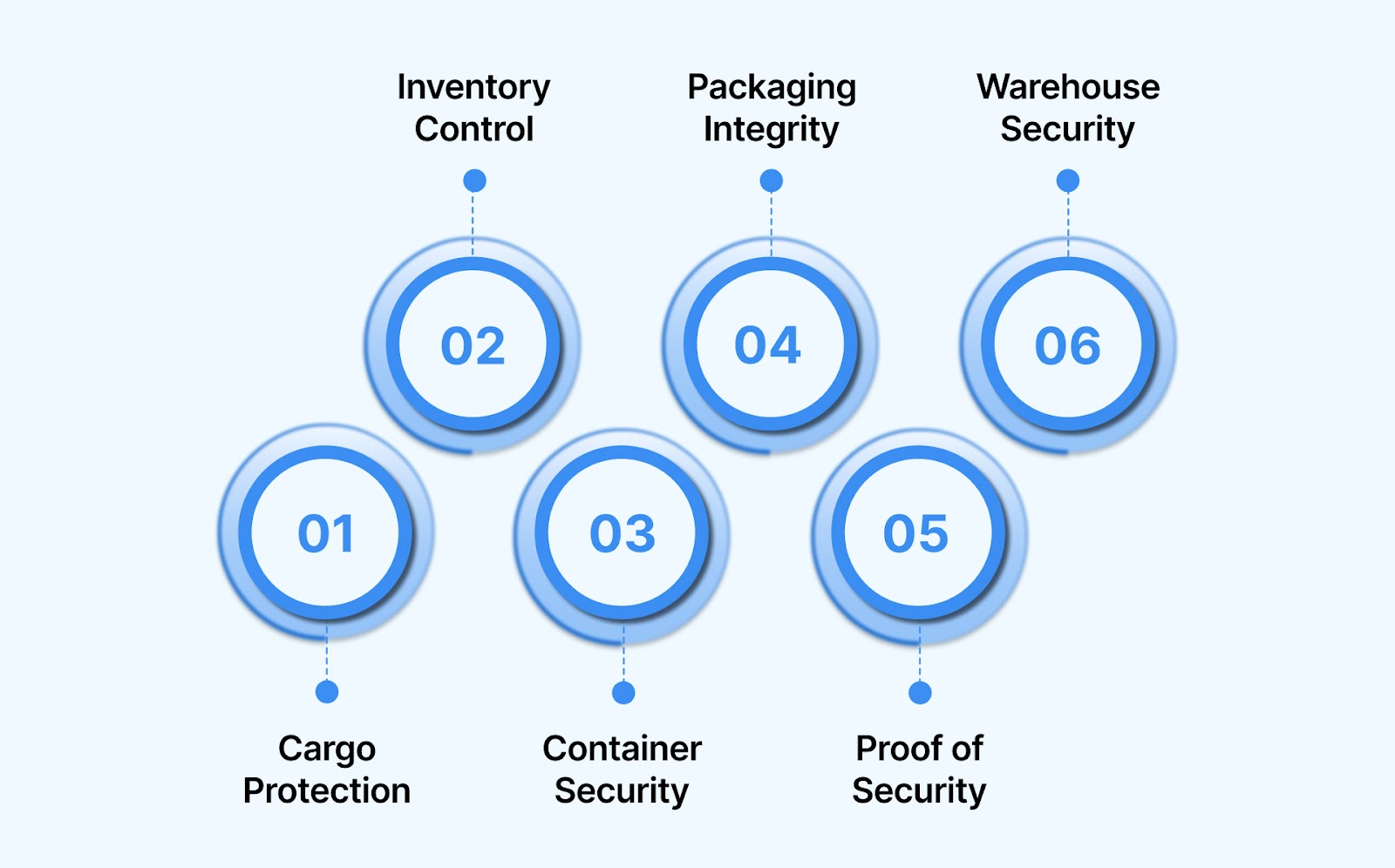
Security seals play a crucial role in safeguarding goods during their transit through the logistics supply chain. From warehouses to delivery trucks, these seals provide both security and peace of mind for logistics professionals and customers alike.
Here are the key uses and applications of security seals in logistics:
- Cargo Protection: Security seals prevent unauthorized access to cargo, ensuring that shipments remain secure throughout their journey from origin to destination.
- Inventory Control: Seals are used to track shipments and maintain proper inventory management, helping you monitor shipment status in real time.
- Asset and Container Security: Seals secure containers, trailers, and storage units, preventing unauthorized access to high-value goods during storage or transportation.
- Packaging Integrity: Security seals help maintain the integrity of packages and prevent contamination or damage, ensuring the goods arrive in the same condition they were sent.
- Proof of Security During Customs Inspection: Seals provide proof that goods were not tampered with during customs inspection, helping avoid delays and ensuring smooth clearance at international borders.
- Warehouse Security: Security seals also help secure storage areas within warehouses, ensuring that goods remain untouched and properly accounted for before they are shipped.
These applications highlight the importance of security seals in logistics, ensuring secure and efficient operations throughout the supply chain. Next, we’ll explore how to choose the best seal for your logistics needs.
Also read: Common Types and Uses of Security Seals
Choosing the Best Security Seal for Logistics and Loss Prevention
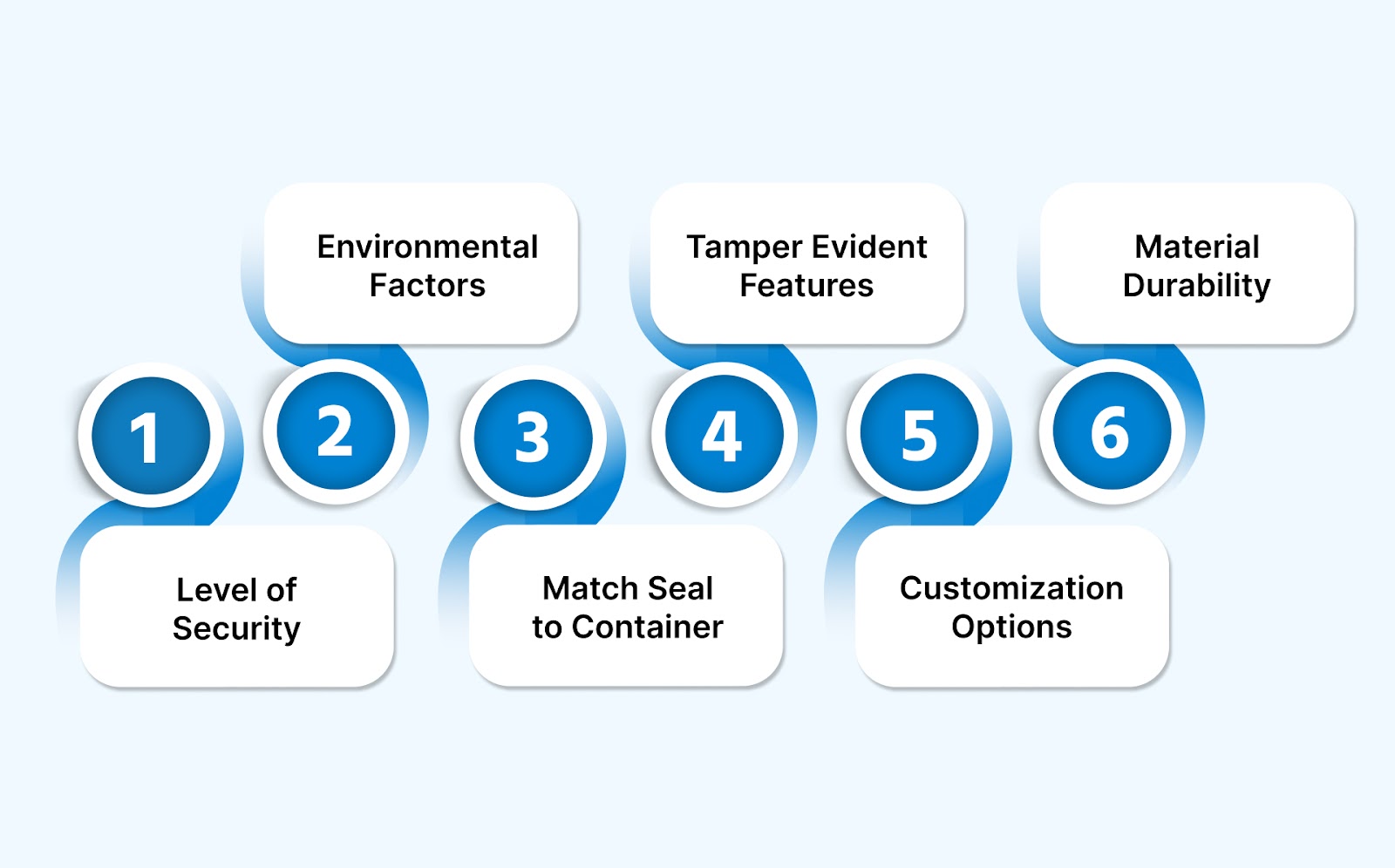
When selecting the best security seal for your logistics needs, it’s important to consider several factors to ensure maximum protection. Choosing the right seal for your shipment protects the goods and helps identify and prevent potential tampering or theft.
Here’s how to choose the right security seal:
- Consider the Level of Security Needed: Choose a seal based on the level of security required for the shipment. Light-duty seals are suitable for low-risk shipments, while heavy-duty seals are better for high-value or sensitive items.
- Assess Environmental Factors: Evaluate the conditions to which the seal will be exposed during transit. For example, seals exposed to extreme temperatures or harsh weather should be durable and weather-resistant.
- Match the Seal to the Container Type: Different containers require specific seals. Choose a seal that best suits the size and strength of your container to ensure optimal security.
- Check for Tamper-Evident Features: Choose tamper-evident seals, which show visible signs of tampering. This helps quickly identify if the package has been compromised during transit.
- Look for Customization Options: Some seals allow for barcoding or numbering. Customizable features help track shipments and improve the audit trail, making identifying and verifying the seal’s integrity easier.
- Material Durability: The seal's material is crucial for ensuring its longevity and strength. Nylon, polypropylene, and metal inserts are common materials, each offering specific advantages depending on the security needs.
Surelock offers a wide range of security seals tailored to different logistics applications. Whether it’s tamper-proof protection for high-value goods or traceability for routine shipments, our seals deliver the security you need for every stage of your supply chain.
You now know how to select the best security seal. But security is not limited to using top-quality seals. There are some best practices that you should follow. Let’s have a look at them.
Also read: What Are C-TPAT High Security Seals and Why Do They Matter?
Best Practices for Applying Security Seals in Logistics
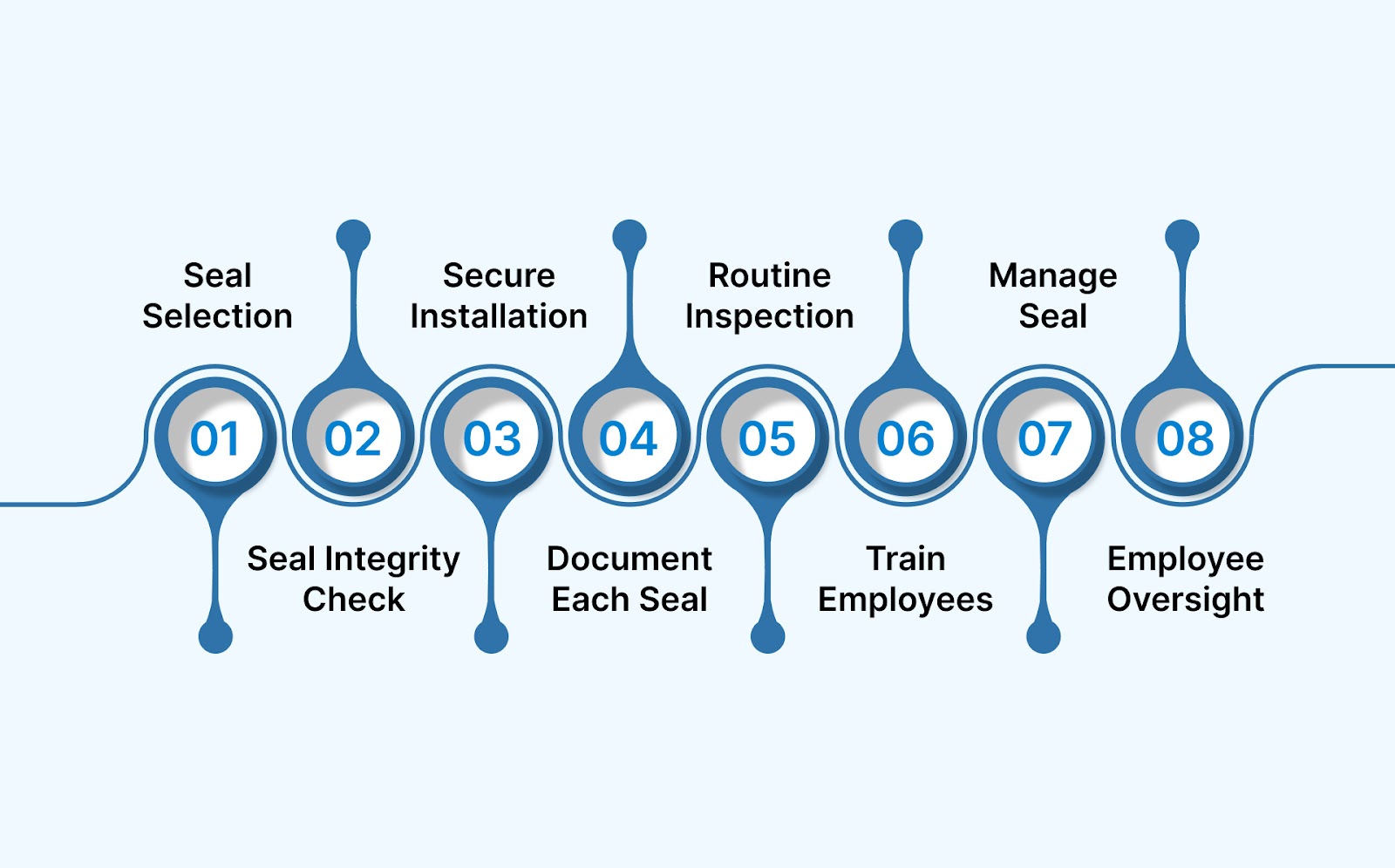
To ensure that your security seals effectively protect shipments, applying them properly is crucial. Correct application guarantees the integrity of the cargo and makes any tampering attempts immediately noticeable.
Here are some best practices you should follow to maintain full control over your logistics operations:
- Choose the Right Seal for the Job: Select a security seal based on the shipment's specific requirements. The right seal depends on factors such as the shipment’s size, risk level, and environmental conditions. Depending on the level of security required, choose between light-duty or heavy-duty seals.
- Seal Integrity Check: Inspect every seal before use. Look for signs of tampering, damage, or reuse. This ensures that your seals perform their intended job and provides clear evidence if something goes wrong.
- Ensure a Secure Application: Apply the seal tightly without slack or looseness. The seal should fit snugly around the locking mechanism to prevent unauthorized access or tampering. You should apply them on the both rear and side doors, matching the seal's strength to the shipment's risk level.
- Document Each Seal: Record the seal's serial number, barcode, or other identifying mark, creating an effective tracking system for your shipments. Always source seals from authorized providers like Surelock and keep accurate records of outbound and inbound seals. This ensures each seal is tracked from application to destination.
- Inspect and Verify Regularly: Consistently inspect the seals during the shipment process. Regular checks help you identify potential breaches or tampering attempts before the goods reach their destination.
- Train Employees: Proper training for your staff is key to ensuring the correct application and inspection of security seals. When employees understand the proper seal protocols, the chances of errors are minimized, ensuring better protection and security for your shipments.
- Managing Broken Seals During Transit: If a seal breaks mid-route, document everything—who broke it, why, when, and who witnessed it. This documentation is essential for understanding and addressing any potential risks that could compromise your shipment.
- Employee Oversight: Always apply seals in the presence of supervisors or shipping representatives to prevent unauthorized access or errors during application.
By following these best practices, you can enhance your supply chain security, reduce the risk of tampering, and safeguard valuable goods throughout the logistics process.
Wrapping Up
In logistics, security seals protect against theft, tampering, and unauthorized access while ensuring compliance with industry standards. Choosing the right seal, whether it’s a metal lock seal, double lock seal, or cable seal, is essential to maintaining security and efficiency in your operations.
And for reliable, high-quality security solutions, look no further than Surelock. With a range of products from heavy-duty security seals to metal lock seals and cable seals, Surelock ensures your cargo stays secure from start to finish.
Contact us today to safeguard your operations with the best in the industry!



